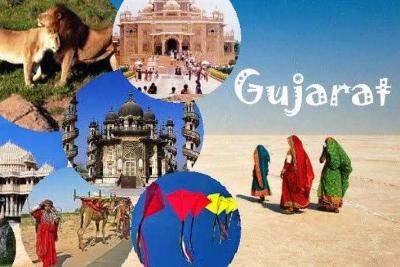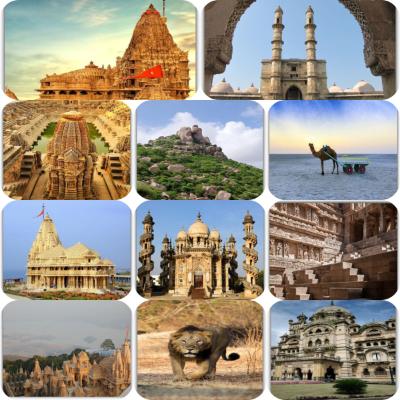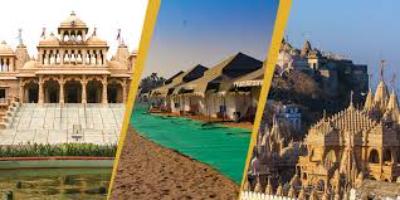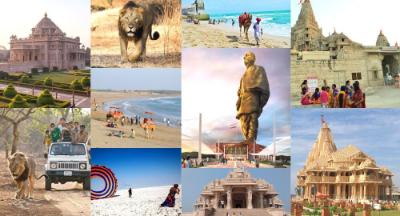Unearthing Gujarat's Prehistoric Sites: Dinosaur Fossils and More
Gujarat, a vibrant state in western India, has long been known for its rich historical and cultural heritage. But did you know that beneath its storied past lies a treasure trove of prehistoric wonders? From dinosaur fossils to ancient cave art, Gujarat offers a fascinating glimpse into the distant past. Join me as we unearth Gujarat's prehistoric sites and discover the secrets they hold.
The Dinosaur Fossil Park, Balasinor
Our journey starts in Balasinor, a small town in the Kheda district of Gujarat. Here lies the Dinosaur Fossil Park, one of the largest fossil sites in the world. Spread over 72 acres, this park is home to a vast collection of dinosaur remains, making it an absolute paradise for paleontologists and dinosaur enthusiasts.
As you wander through the park, you'll come across numerous fossilized bones and eggs, some as old as 65 million years. The star attraction of the park is the Rajasaurus Narmadensis, a carnivorous dinosaur whose remains were discovered here. The park also houses a museum where you can learn more about these magnificent creatures and the excavation process.
The Ancient Harappan Site of Lothal
Leaving the dinosaurs behind, we venture to the ancient Harappan site of Lothal, situated near the city of Ahmedabad. Lothal was one of the primary centers of the Indus Valley Civilization and dates back over 4,000 years. It is an incredibly well-preserved site that offers valuable insights into the life and culture of the Harappan people.
At Lothal, you can explore the remnants of a sophisticated dockyard, believed to be one of the oldest in the world. This dockyard played a vital role in Lothal's maritime trade, connecting it to distant lands. The site also features a marketplace, residential areas, and a remarkable drainage system, all showcasing the advanced planning and urban development of the Harappan civilization.
Rock Art of Bhimbetka
Our journey takes us further back in time to the rock shelters of Bhimbetka, located in the Raisen district of Madhya Pradesh but easily accessible from Gujarat. These UNESCO World Heritage Sites provide a glimpse into the artistic endeavors of our prehistoric ancestors.
Here, you'll find a vast collection of rock paintings created by early humans over thousands of years. The paintings depict scenes from everyday life, hunting expeditions, mythical creatures, and religious rituals. These artworks not only showcase the creativity and imagination of our ancient ancestors but also provide valuable insights into their culture and beliefs.
The Ancient Cave Complex of Junagadh
Our final stop on this journey into Gujarat's prehistoric past is the ancient cave complex of Junagadh. Situated at the foot of Mount Girnar, these caves date back to the 3rd century BCE. The complex consists of more than 1,000 caves, some of which were used as residences and others as religious spaces.
As you explore the caves, you'll come across beautifully carved rock-cut architecture, ancient inscriptions, and intricate sculptures. One of the most impressive caves is the Uparkot Caves, known for its stunning pillars and rock-cut reservoirs. These caves not only reflect the architectural brilliance of ancient times but also provide a serene and contemplative atmosphere.
In Conclusion
Gujarat is a treasure trove of prehistoric wonders, offering a unique insight into the history of our planet and the civilizations that once thrived here. From dinosaur fossils to ancient cave art, these sites take you on a journey through time, allowing you to connect with our prehistoric past in a profound way.
So, whether you're a history enthusiast, an archaeology buff, or simply someone seeking a different kind of adventure, Gujarat's prehistoric sites will captivate and inspire you. Explore these hidden gems and unravel the mysteries of our ancient past.
Don't forget to share this incredible journey with your friends and fellow travelers, and let them join in this adventure of unearthing Gujarat's prehistoric sites.
Disclaimer : The information provided in this blog is for general informational purposes only. While we strive to keep the content accurate and updated, TravelSetu assumes no liability for errors or omissions. If you believe any part of this blog infringes your rights or causes concern, please notify us immediately at info[at]travelsetu[dot]com so that appropriate action can be taken.





